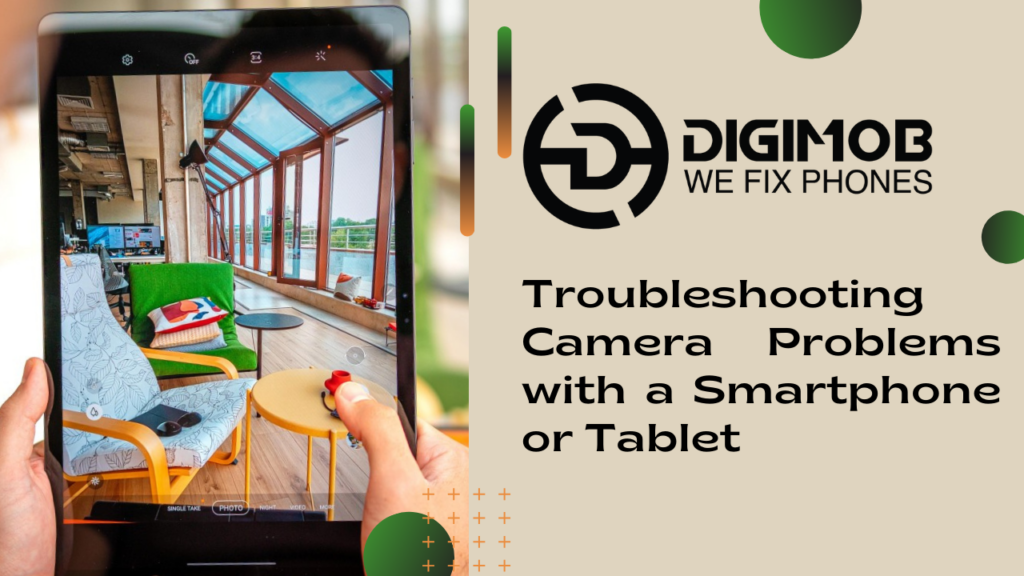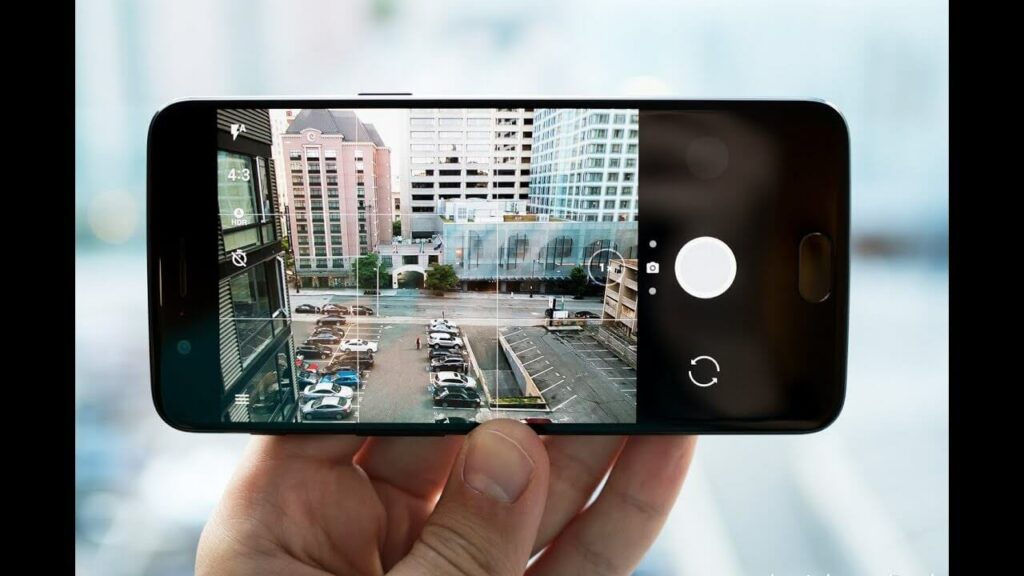Introduction:
The camera is one of the most utilized features of smartphones and tablets, allowing users to capture precious moments, document events, and communicate visually. However, encountering issues with the camera can be frustrating, hindering your ability to take photos or record videos. In this comprehensive guide, we’ll explore common camera problems encountered with smartphones and tablets and provide troubleshooting steps to resolve them effectively, ensuring you get the most out of your device’s camera functionality.

Identifying Common Camera Problems:
Before delving into troubleshooting steps, it’s essential to identify common camera problems that users may encounter with their smartphones or tablets. These issues can include:
- Blurry or Out-of-Focus Images: Images captured by the camera appear blurry or out-of-focus, making them unclear or distorted.
- Camera App Crashes: The camera app unexpectedly crashes or freezes when attempting to open or use the camera.
- Black or Blank Screen: The camera displays a black or blank screen when activated, preventing users from capturing photos or videos.
- Poor Low-Light Performance: The camera produces grainy or dark images in low-light conditions, lacking clarity and detail.
- Autofocus Issues: The camera struggles to autofocus properly, resulting in difficulty capturing sharp and focused images.
- Overexposed or Underexposed Images: Images appear overexposed (too bright) or underexposed (too dark), affecting overall image quality.
- Flash Not Working: The camera flash fails to activate or function properly when capturing photos in low-light environments.
Now, let’s explore troubleshooting steps to address these common camera problems effectively:

- Clear Camera Cache and Data:
- Open the Settings app on your device and navigate to the Apps or Applications Manager section.
- Locate and select the Camera app from the list of installed apps.
- Tap on “Storage” or “Storage Usage” and then select “Clear Cache” followed by “Clear Data” to reset the camera app’s settings and preferences.
- Restart Your Device:
- Sometimes, simply restarting your smartphone or tablet can resolve camera-related issues by refreshing system processes and clearing temporary data.
- Press and hold the power button on your device until the power menu appears, then select “Restart” or “Reboot” to restart the device.
- Update Camera App and System Software:
- Ensure that your device’s camera app and system software are up-to-date with the latest version available.
- Open the App Store (for iOS devices) or Google Play Store (for Android devices) and check for updates to the camera app.
- Additionally, go to the Settings app on your device, navigate to the System or Software Update section, and check for any available updates to the device’s operating system.
- Check Camera Settings:
- Review the settings and options available in the camera app to ensure they are configured correctly for optimal performance.
- Pay attention to settings such as resolution, HDR (High Dynamic Range), flash, autofocus mode, and exposure compensation, and adjust them as needed based on your preferences and shooting conditions.
- Test Camera in Safe Mode:
- Boot your device into Safe Mode to determine if a third-party app is causing interference or conflicts with the camera functionality.
- Press and hold the power button on your device until the power menu appears, then press and hold the “Restart” or “Reboot” option until a prompt to enter Safe Mode appears.
- Once in Safe Mode, open the camera app and test its functionality. If the camera works properly in Safe Mode, it indicates that a third-party app may be the culprit.
- Clear Cache Partition (Android Devices):
- If you’re using an Android device, clearing the cache partition can help resolve camera-related issues caused by corrupt or outdated system cache files.
- Turn off your device, then press and hold the volume up button and the power button simultaneously until the device vibrates and the recovery menu appears.
- Use the volume buttons to navigate to the “Wipe Cache Partition” option, then press the power button to select it. Follow the on-screen instructions to clear the cache partition, then reboot your device.
- Perform Factory Reset (Last Resort):
- If all else fails and camera issues persist, performing a factory reset on your device can help resolve software-related issues by restoring the device to its original settings.
- Before proceeding with a factory reset, ensure that you’ve backed up your important data, as this process will erase all data and settings from your device.
- Open the Settings app on your device, navigate to the System or Reset section, and select the option to perform a factory reset. Follow the on-screen instructions to complete the process.
Splash troubles? Dive into swift solutions with Digimob iPhone Repair! Locate your nearest Digimob location at www.digimob.com.au and connect with our expert team to promptly resolve any issues. Your device’s lifeguard is just a click away!
Conclusion:
Encountering camera problems with your smartphone or tablet can be frustrating, but by following the troubleshooting steps outlined in this guide, you can effectively diagnose and resolve common issues. Whether it’s clearing cache and data, updating software, adjusting settings, or performing a factory reset, these steps can help restore your device’s camera functionality and ensure you’re able to capture clear and crisp photos and videos. If problems persist despite troubleshooting efforts, consider contacting the manufacturer’s support service or seeking assistance from a professional technician for further diagnosis and repair.

Frequently Asked Questions (FAQs)
- Why is my smartphone/tablet camera showing a black screen or not working?
- A black screen on the camera or a camera not working can be caused by various factors, including software glitches, hardware issues, or permissions settings. Troubleshooting steps may involve restarting the device, clearing the camera app cache, checking for software updates, or testing the camera in Safe Mode to identify potential conflicts with third-party apps.
- How can I fix blurry or out-of-focus photos taken with my smartphone/tablet camera?
- Blurry or out-of-focus photos can result from issues such as camera shake, improper focus settings, or hardware problems. Troubleshooting steps may include cleaning the camera lens, ensuring proper focus and exposure settings, stabilizing the device while taking photos, and updating the camera app or system software.
- What should I do if my smartphone/tablet camera app keeps crashing or freezing?
- Camera app crashes or freezes can be caused by software bugs, insufficient memory, or conflicts with other apps. Troubleshooting steps may involve clearing the camera app cache, force-stopping the app, updating the app or system software, or performing a factory reset as a last resort.
- Why are my smartphone/tablet camera photos overexposed or underexposed?
- Overexposed (too bright) or underexposed (too dark) photos can occur due to improper exposure settings, lighting conditions, or hardware issues. Troubleshooting steps may include adjusting exposure compensation settings, using HDR mode in high-contrast scenes, or manually adjusting exposure settings in the camera app.
- How can I improve low-light performance with my smartphone/tablet camera?
- Poor low-light performance can result in grainy or dark photos, especially with smartphone or tablet cameras. Troubleshooting steps may involve using the device’s built-in night mode or low-light mode, increasing ISO sensitivity, stabilizing the device to reduce camera shake, or using external lighting sources such as flash or LED lights for better illumination.
